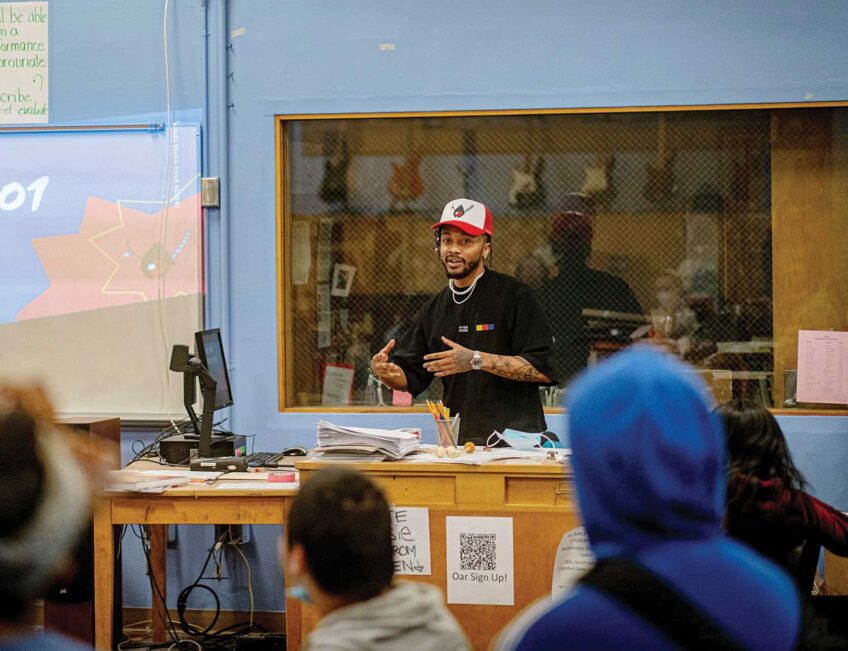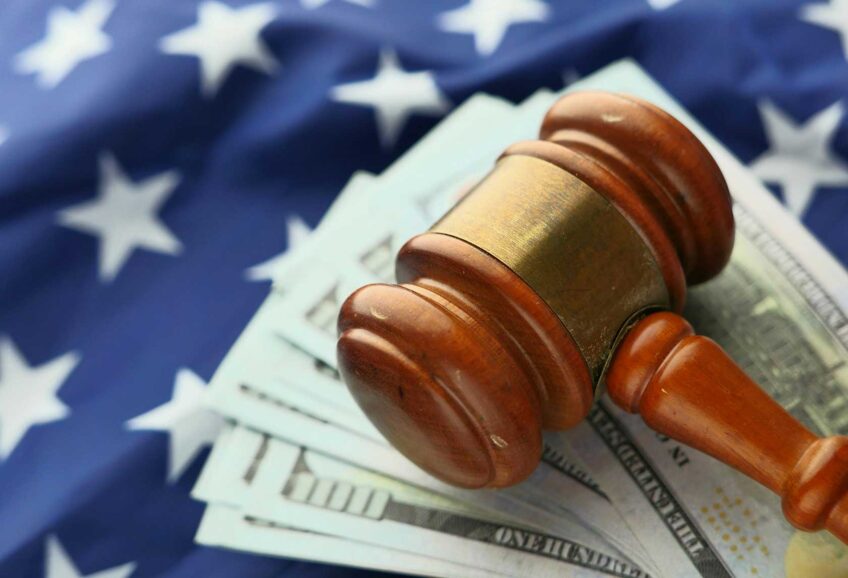Black, queer — and leading the NAACP in New England
Local leaders and activists aim to change the narrative between the LGBTQ+ community and Black civil rights groups
Growing up in St. Louis, a city rich with civil rights history, Steffen Gillom recalls a childhood steeped in Black church culture and the presence of traditional groups like the NAACP.
However, he never became a member of or personally connected with his local NAACP, largely due to the lack of representation of queer people in the organization.
“I never really envisioned myself as being a part of [the NAACP] because the people that I saw were straight,” Gillom said. “They were more socially conservative.”
Gillom now works with the New England Area Conference, a regional division of the NAACP, following several years of heading the Windham County, Vermont, branch. His campaign for the conference was “a decision to run for representation as well,” he said.
Gillom’s ascension to regional leadership is a mark of how far the predominantly Black organization has come in its support of members of the LGBTQ+ community.
An organization with roots in the Black church, the NAACP’s values aligned with archaic views for a long time, including the homophobia and transphobia that is alive in many religious institutions today. In 2012, for instance, the NAACP endorsed same-sex marriage, which prompted local leaders around the country to resign from the organization.
Recently, there have been signs that the culture of the NAACP is shifting. This summer, over a decade later, NAACP leaders advocated on behalf of LGBTQ+ acceptance at the organization’s 114th annual convention at the Boston Convention Center.
“In the last 15 to 20 years, the NAACP is like, look, [we’ve got to] hand this off,” said Tabitha Moore, the founder of the Rutland, Vermont, branch of the NAACP. “But I think with any intergenerational handoff, there’s going to be some changes that are hard for people to weather.”
Gillom, Moore and other queer leaders and representatives in Boston and New England aim to continue the changes toward intersectionality and acceptance within the NAACP.
Upon moving to Vermont for graduate school, Gillom said he felt that he wouldn’t be comfortable in its existing NAACP branches as a queer person, saying that Vermont felt like an “island” for queer people of color.
“I noticed that there was this huge lack of representation and infrastructure in the state of Vermont around BIPOC or especially queer BIPOC voices,” Gillom said, referring to Black, Indigenous and other people of color.
So, he founded his own branch as a way to build inclusion and diversity in the Vermont NAACP from the ground up, forming a coalition of queer and queer-allied Black and brown people. Gillom said that although it is usually difficult to establish a branch, he felt it was the easier way to do NAACP work in a way that included LGBTQ+ identities.
“Because of [Vermont’s] uniqueness and lack of infrastructure, and realizing that as a queer person I probably wasn’t going to be able to enter the surrounding branches and feel comfortable, I set off to found my own branch,” Gillom said.
Gillom teamed up with Moore when they were both founding their branches. Together they worked to establish the NAACP’s presence in Vermont in a more thoughtful way, being sure to recognize “both the complexity of oppression and the power of unity,” said Moore.
“My identity is intersectional,” said Moore. “I don’t identify as heterosexual, and I felt like there were so many places and ways that the NAACP could do even better and really strengthen the message. Our people should be both represented and reflected in all systems and institutions.”
Both Gillom and Moore acknowledged the role of religion in the NAACP and in bringing Black communities together, but like many religions, it has not been kind to LGBTQ+ individuals, they said.
Recently, things have been changing. In 2018, during the NAACP’s 109th annual convention, the organization publicly denounced its history of homophobia during a town hall meeting. Leon W. Russell, chair of the national board of directors, apologized on the NAACP’s behalf.
The Boston branch held a reception on LGBTQ+ issues during the NAACP convention in Boston this summer. Following the convention, Tanisha Sullivan, president of the Boston branch, officially formed its first LGBTQ+ committee and appointed Quincey J. Roberts.
Roberts, an activist and former Boston city official, said he wants to take a different approach to the committee. As he moves into a leadership position at a branch with a 112-year legacy, he is working to change the longtime narrative that exists within it.
Roberts is adamant that the committee encourages “uncomfortable” conversations around the LGBTQ+ issues that have been long entrenched in the NAACP.
“I am tired of preaching to the choir,” said Roberts. “I love my queer Black folks, I love my queer brothers and sisters that come in all forms, but I am so tired of sitting on panels where I’m looking at the crowd and they all agree with me.”
Like Gillom and Moore, Roberts said he is cognizant of the fact that LGBTQ+ issues that have been long pervasive in the NAACP stem from religion.
“We’re going to talk about how Pastor such-and-such said I might go to hell, but still wants me to serve in the church.” Roberts said. “When it comes to religion, … [it’s about] how do we find affirming Black churches for queer members of the NAACP? That is the goal.”
In the past few years, attitudes and acceptance of queer identities in the NAACP have changed noticeably, both in New England and throughout the rest of the country.
When Gillom first began working with the New England Area Conference, he felt instantly “that there was a big difference in the culture, and that all of my fears [were not] affirmed, but that they were alive.”
However, the changes he had witnessed at the branch level were enough to push him into a leadership role at the regional level, become more involved and work towards raising up queer voices.
“There were small pockets of really powerful queer people across the country [doing] similar work to what we’re doing here in New England,” said Gillom. “I think that some of those pockets of people are starting to now rise into leadership positions.”
Though Moore no longer works with the Rutland branch, she established a culture there that aims to turn the NAACP’s legacy of grassroots activism for Black civil rights into one that amplifies the voices of people doing all kinds of identity-based activism.
“We made sure that was one of our key things: to use the power in that legacy to free all of us,” she said.
Roberts’ current project at the Boston NAACP is organizing an event that will include a watch party of “Rustin,” a Netflix movie about Bayard Rustin, the gay Black man who helped organize the March on Washington, and a discussion of “The Color Purple,” a book-turned-movie that explores Black queer identities, among others. He hopes to bring more queer people into the NAACP.
“I’m going to lean into that difficult conversation, because on the other end of that conversation is something good, I truly believe,” Roberts said. “We are the shift. This is the shift.”






